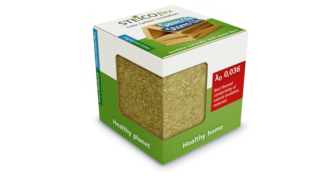Rising temperatures are more than welcome after the cold months – but: ever hotter and longer summers also have a noticeable impact on our living comfort as residents quickly find high temperatures uncomfortable. A house with good thermal insulation heats up less quickly than a poorly insulated one. Natural STEICO wood fibre insulating materials are particularly effective in protecting against heat. They are also highly effective as cold protection and save heating energy and thus costs in winter.
STEICO insulation materials are a working heat shield
A natural property of wood fibre is that it can store heat very well and thus regulate the temperature inside the house. On summer days, heat remains buffered in the insulation layer for several hours. This means that a large part of it does not even reach the living rooms and radiates outwards by itself in the cooler evening hours. According to independent studies, days with unpleasantly high temperatures can be almost halved with wood fibre insulation in the attic. This means that occupants remain in a comfortable zone for longer, which is important for restful sleep, for example.
Heat protection starts at the roof
"In summer, heat affects the roof surface for hours, and poor insulation can only stop it for a short time, if at all," explains Martin Twamley, technical advisor at STEICO. "Anyone who has their roof insulated with wood fibre protects themselves well against heat. In addition, they are choosing durable and energy-efficient building material made from renewable raw materials." Flexible mats such as STEICOflex 036 are suitable for roof or top floor insulation. They are particularly easy to install
Climate-protecting heat insulation
Like wood as a raw material, wood fibres permanently store climate-damaging CO2. The amount of wood fibre insulation used to insulate an average roof in the UK permanently removes up to 1.5 tonnes of CO2 from the atmosphere. This is roughly equivalent to the emissions caused by an average car driver in 1.5 years.


